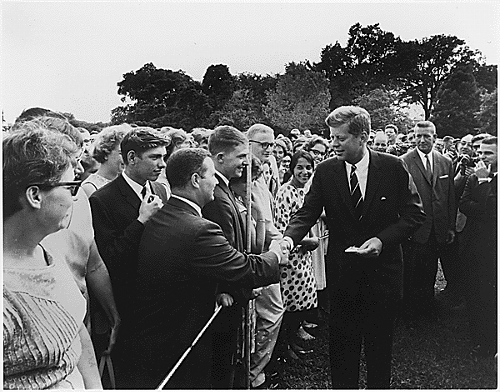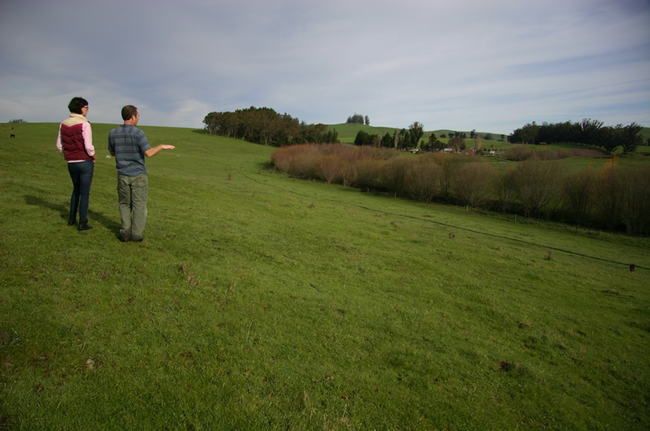Posts Tagged: David Lewis
Counties can offset greenhouse gas emissions with stream restoration
“We have long known that stream revegetation improves wildlife habitat and enhances water quality, but that fact that the vegetation and trapped sediment capture carbon underscores the importance of this conservation practice,” said David Lewis, a UC Agriculture and Natural Resources (UC ANR) watershed management advisor for Marin, Sonoma and Napa counties.
Going back to the time when Gen. Mariano Guadalupe Vallejo was running long-horn cattle on a vast tract of land in Alta California, ranchers didn't always understand the value of the trees, shrubs and grasses that grew around rangeland waterways.
Vallejo removed vegetation because it provided a hideout for grizzly bears that attacked his cattle and pilfered hides being tanned. In later years, authorities coached landowners to alter streams and remove plants to increase stream flow and improve flood control.
Beginning in the 1960s, the environmental impacts of removing trees and plants became apparent and public funds were made available to share in the cost of restoring streamside vegetation on private land, said Lewis, who is also director of UC ANR Cooperative Extension in Marin and Napa counties. Over a period of three years, he and a team of UC and local scientists studied the stream revegetation projects that took place from about 1970 to just recently. They documented the carbon sequestration benefits of stream revegetation and calculated the value based on the current market for carbon credits. The results were shared in a report released this month, Mitigating Greenhouse Gas Emissions through Riparian Revegetation.
“In Marin County, for example, the cost per metric ton for carbon dioxide equivalence sequestered with revegetation was $19.75. The carbon market is currently paying about $12.50,” Lewis said. “There is about $7 that we haven't made up. But when you think about the other benefits of riparian restoration – reduced sediment, restored habitat for migratory songbirds and other wildlife – I would bet that value to be much greater than $7.”
Lewis' research will be of interest to county governments as they strive to reduce total greenhouse gas emissions to comply with the requirements of the 2006 California Global Warming Solutions Act (AB 32). The legislation requires California to reduce its greenhouse emissions to 1990 levels by 2020. As part of the law, local governments must write a “Climate Action Plan” to report how they will monitor and track progress in reducing and offsetting greenhouse gas emissions.
“It may make sense for governments and project proponents to invest in creek restoration and other farm conservation practices to reach and surpass their carbon emission reduction goals,” Lewis said.
Through 1990, Marin ranchers restored more than 25 miles of stream with willows, oaks and other trees and shrubs. Those plants trapped sediment contain an estimated 80,265 metric tons of sequestered carbon – an amount equal to emissions from 61,959 passenger cars in one year.
Lewis estimates there are several hundred miles of unrestored streams in Northern California coastal counties. And the implications of this study have application for rangeland streams throughout California.
“This represents tremendous potential for carbon sequestration,” Lewis said. “And rancher interest in stream restoration has never been higher. Working with the ranchers to plant trees and shrubs along our waterways presents a significant opportunity to offset carbon emissions.”
An initiative to maintain and enhance sustainable natural ecosystems is part of UC Agriculture and Natural Resources Strategic Vision 2025.
When oysters and cows collide
California’s scenic Marin County is home to two thriving industries that were once in conflict – oyster farming and dairy farming.
In order to grow healthy and marketable oysters, the farmers depended on clean water in Tomales Bay. But regulations meant to protect the bay from cattle runoff were so strict that dairy farmers feared they could no longer stay in business.
Now, with help from David Lewis, director of UC Cooperative Extension in Marin County, these two communities have found creative solutions that allow both kinds of farmers to share this beautiful and fertile region. Find out how in a four-minute report by Kristen Simoes on UCTV Prime Cuts, “Cooperation Trumps Conflict in Tomales Bay.”
Fair exhibit a tribute to Marin's first advisor
UC Cooperative Extension's first farm advisor in Marin County was featured in a story written by Vicki Larson in the Marin Independent Journal.
M.B. Boissevain, who became a UCCE advisor in 1920, took approximately 500 photos of Marin agriculture and its people during his 30-year career. Ellie Rilla, UCCE advisor in Marin County, and David Lewis, UCCE director and advisor in Marin County, assembled an exhibit of 74 of his photos that was on display at the Marin County Fair June 30 – July 4.
Lewis and Rilla have also written a book, “Marin Agrarian Roots,” about the agricultural history of the county based on Boissevain’s photos and farm reports.
Many UC academics heeded Kennedy's call to 'serve the cause of peace'
When President John F. Kennedy created the Peace Corps in 1961, he not only sent thousands of Americans to serve the cause of peace in the developing world, he set them on a course of service that continued when they returned to the U.S. A significant number came to work for UC Cooperative Extension.
One of them is Jim Grieshop, a now-retired UCCE community education development specialist, who was profiled in an article in the February issue of Alaska Airlines Magazine marking the Peace Corps' 50th anniversary.
Acceptance into the Peace Corps helped Grieshop achieve his personal goal of living and working in Latin America, the article said. In May 1964, he arrived in Cayambe, Ecuador, to spend two years as a science teacher. He quickly learned to be flexible.
"The science teacher in the village didn't really want me to teach science," Grieshop was quoted in the story. "So I taught English in primary schools and the high school . . . . We put on a rodeo, we did some summer programs - I was kind of making it up as I went along."
Here are some of the other UCCE academics, past and present, who served in the Peace Corps:
Monica Cooper, viticulture farm advisor in Napa County, volunteered in an agrarian community in Panama.
Jeff Dahlberg, director of the UC Kearney Agriculture Research and Extension Center, served for three years in the Republic of Niger.
Chris Dewees, retired specialist in Cooperative Extension marine fisheries, volunteered in Chile.
Morgan Doran, livestock and natural resources farm advisor in Solano County, volunteered in Ecuador.
Ben Faber, Ventura County farm advisor, served in Togo, Africa.
Mark Gaskell, small farm advisor in San Luis Obispo County, served in Venezuela.
Juan Guerrero, retired farm advisor emeritus for Riverside and Imperial counties, worked with subsistence farmers and large-scale commercial farmers in Paraguay and Peru.
Glenda Humiston, vice president, UC Agriculture and Natural Resources, served in Tunisia, North Africa.
Susan Laughlin, retired regional director, spent three years in Colombia.
David Lewis, watershed management advisor in Marin County, volunteered in Niger.
Mike Marzolla, retired 4-H advisor in Ventura County, coordinated a school and community garden program in Guatemala.
Richard Molinar, retired small-scale farm advisor for Fresno County, served in Honduras.
Jeff Mitchell, cropping systems specialist, UC Kearney Agricultural Research and Extension Center, served in Botswana, Africa.
Rachel Surls, UCCE sustainable food systems advisor in Los Angeles County, served in Honduras.
Jack Williams, the retired Sutter/Yuba county director, worked alongside farmers in Kenya, Africa.
Ken Wilmarth, former 4-H advisor in Stanislaus County, and his wife, Jenny, spent two years in Chavin, Peru.
Have I missed any UCCE Peace Corps volunteers? Please post a comment letting me know.

President Kennedy greets Peace Corps volunteers in 1961. (Photo: Wikimedia Commons.)



